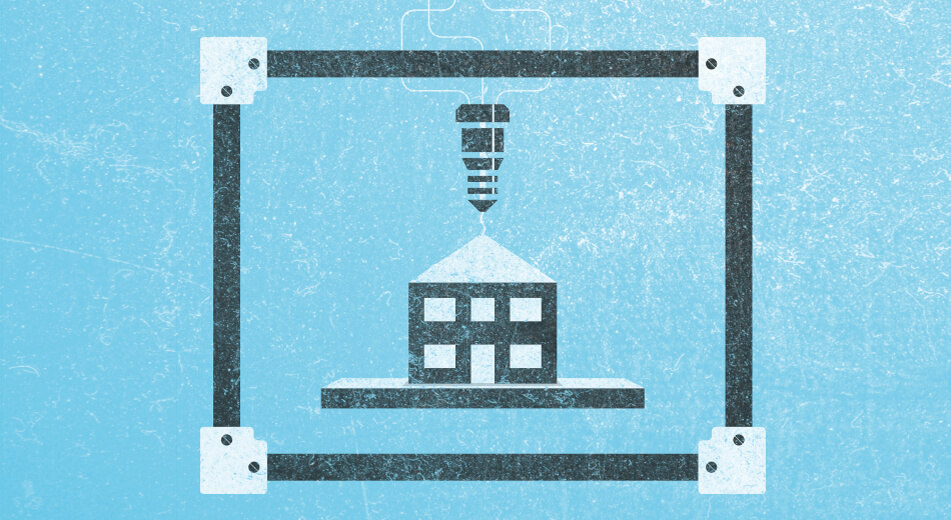
17 Jan' 14 | By Amanda Smith
Manufacturing processes such as 3D printing have been on the horizon for a few years, but they are certainly gaining more attention in the wake of recent developments regarding the world’s first concrete printer that is able to build a home in less than 24 hours.
Researchers at the University of Southern California claim to have developed a giant 3D printer that can print a 2,500-square foot concrete home in just a day. The printer was developed by Professor Behrokh Khoshnevis and can create the entire home using a layer-by-layer process called “Contour Crafting.”
The robotic extruding method takes its orders from CAD software, which stores and executes the architectural designs. As the layers are built, the machines automatically embed pipes and channels for electrical, plumbing and air conditioning, as well as electronic sensors that will monitor the building’s health and temperature over time. The designs can even be customised on the construction site as work is underway.
Not only will computer aided design increase productivity but it will also solve environmental issues such as co2 emissions, waste and energy efficiency. The technology is already enabling the rapid rise of on-demand manufacturing, which allows designers to sell a product with a much shorter lead-time, embracing the main principles of supply and demand. Today, construction is slow, expensive, labour intensive and inefficient.
Professor Khoshnevis estimates that Contour Crafting will save the construction industry 20-25% in financing, and 25-30% in materials. The biggest savings however will be in labour, where using 3D printers instead of humans could save up to 55%. As Contour Crafting wastes less materials and labour, this process will also reduce the total cost of owing a home. It will also make it easier to repair homes damaged by devastating weather events. Take the Typhoon Haiyan storm in the Philippines, or the recent floods in England for example, 1,700 homes have been flooded due to storms in December and January. In the near future, the damage that will currently take weeks, months or even years to repair, could be reconstructed in a matter of hours.
Enthusiasts believe that the 3D printer will soon become a common household tool. So what does this revolution mean for us?
Well if you’re not happy with the current layout of your bathroom, then print another one. Broken your kitchen cabinets? Print some more. Need extra space? Scan the wall it’s to be adjoined to, download a plan, adjust it to your requirements and print it out. The every day homeowner will assume the role of both the designer and builder, making architecture accessible at the click of a mouse.
Consumers will finally have the exact style they want, to their taste in a matter of minutes and at a fraction of the cost. 3D printing will revolutionise consumer purchasing completely. Could this be the end of retailers? And if so, what marketing will emerge from this innovation? There will be a healthy stake for those who can tap into the early adopters and take advantage of the possibilities this technology presents. More importantly marketers will need to be ahead of the pack when it comes to selling this technology and the new customer journey.
10 Jan' 14 Can Wearable Technology Ever Be Stylish?